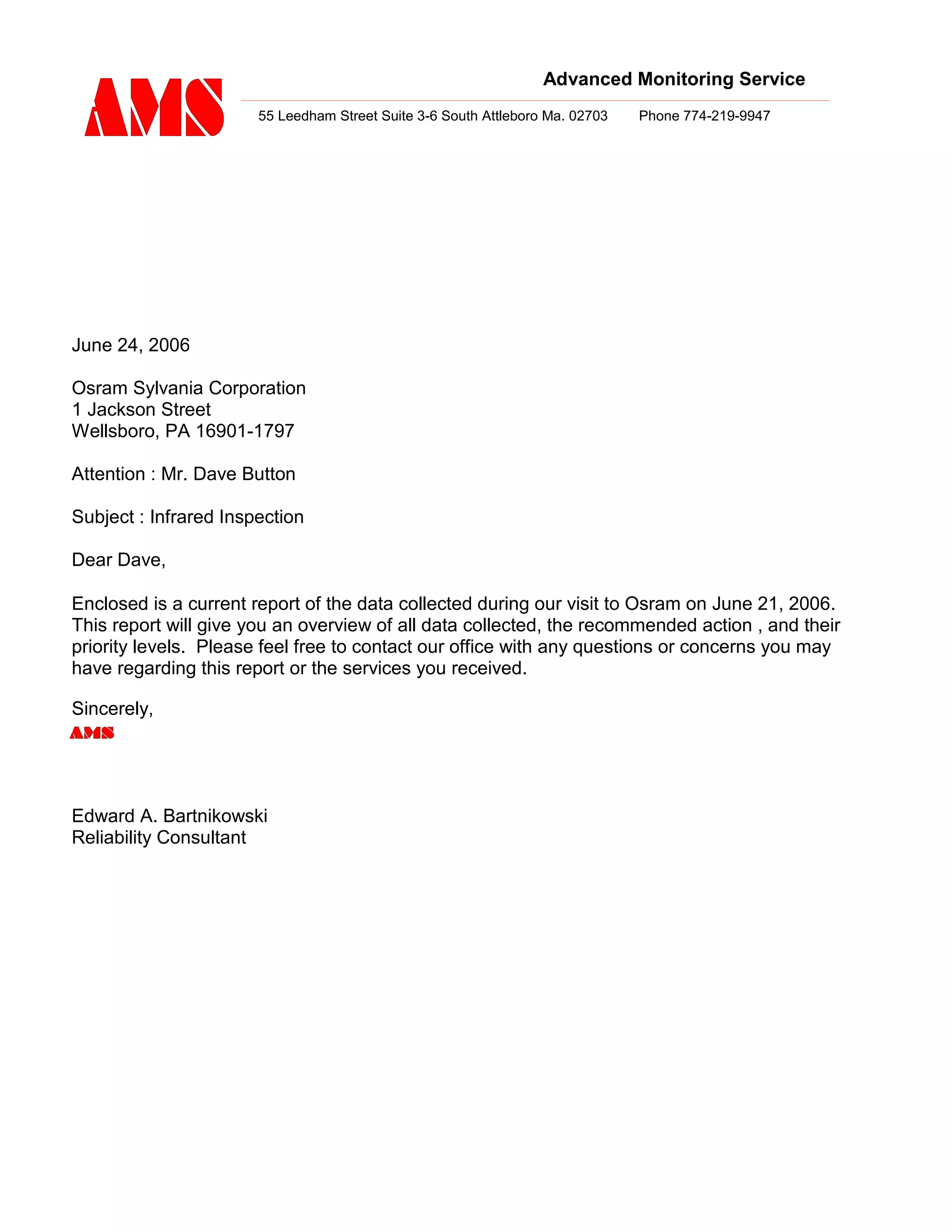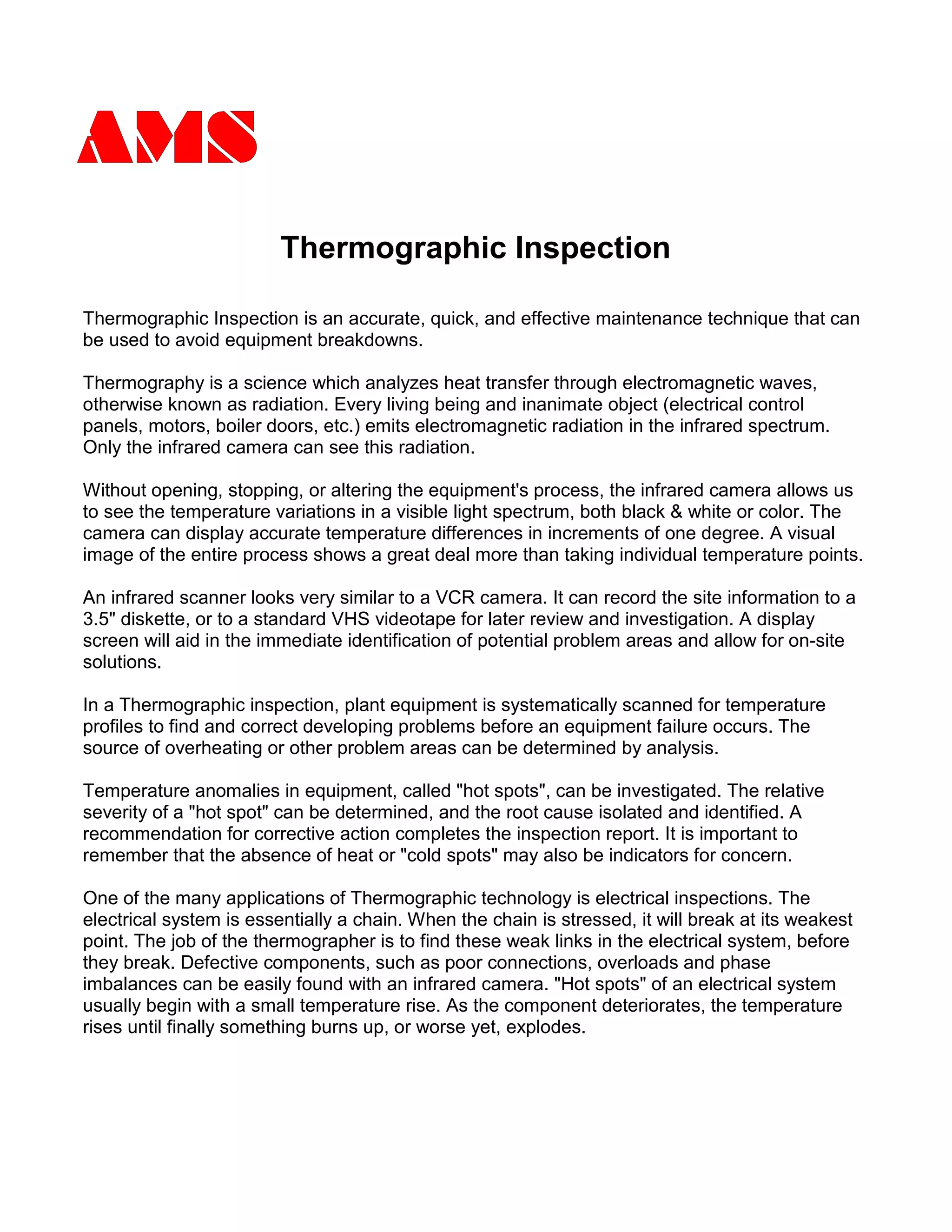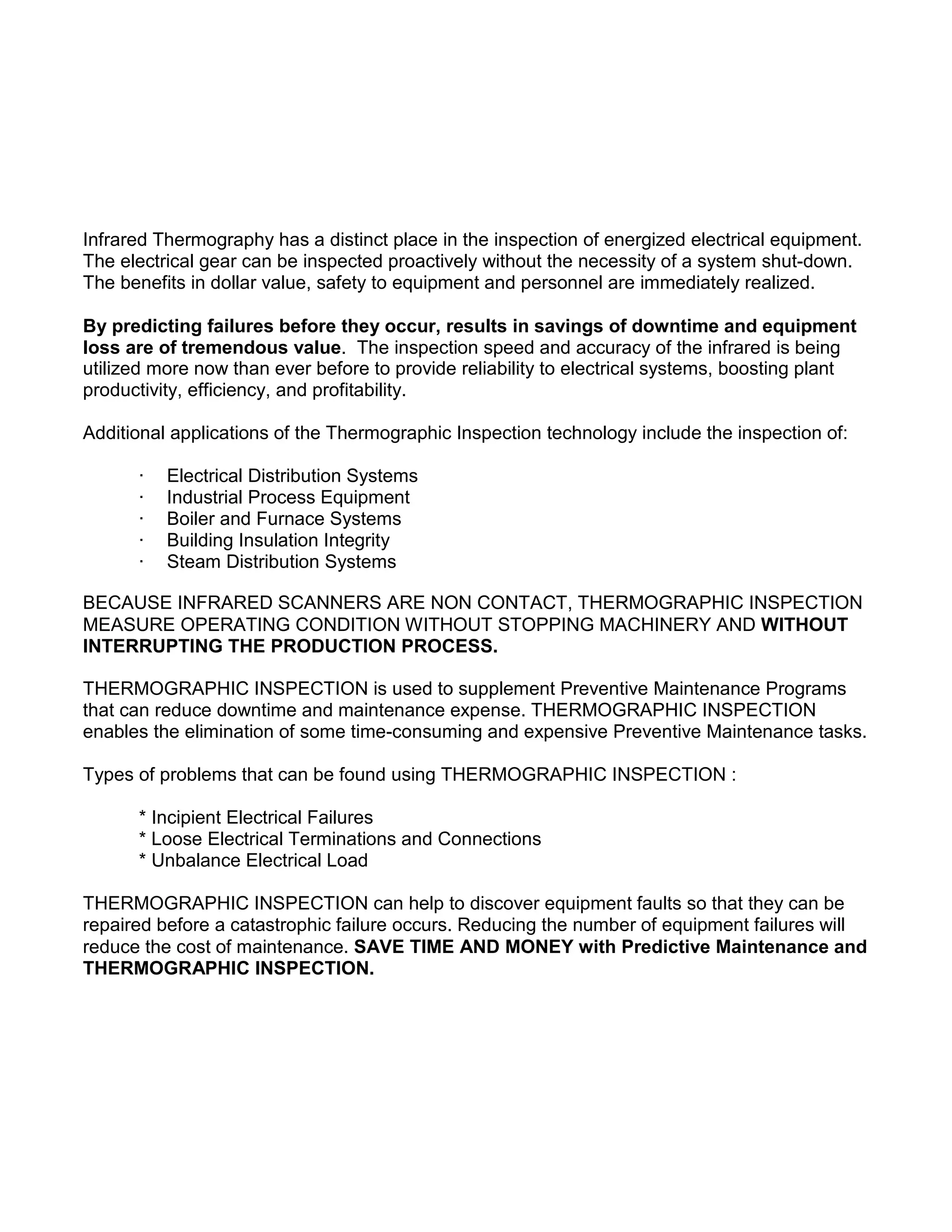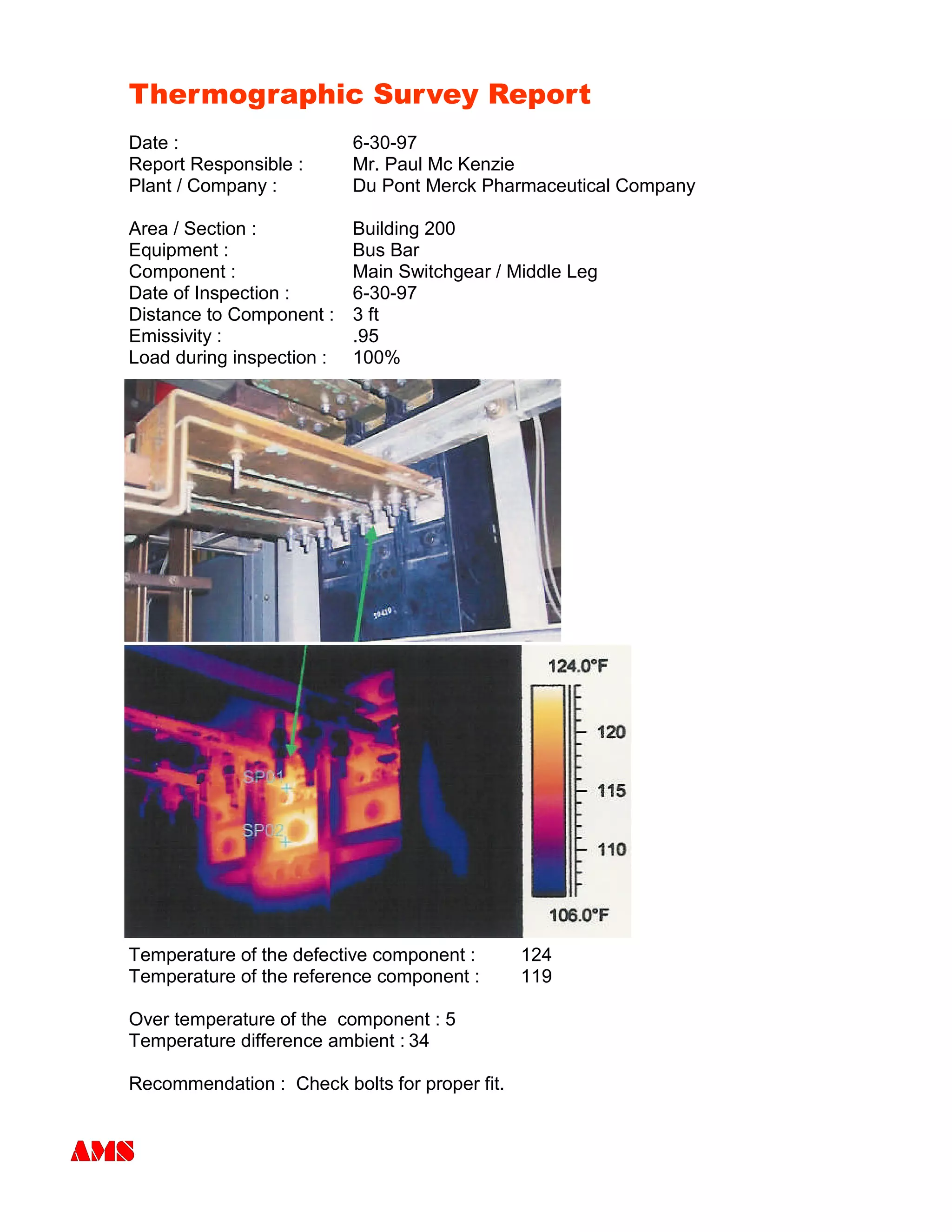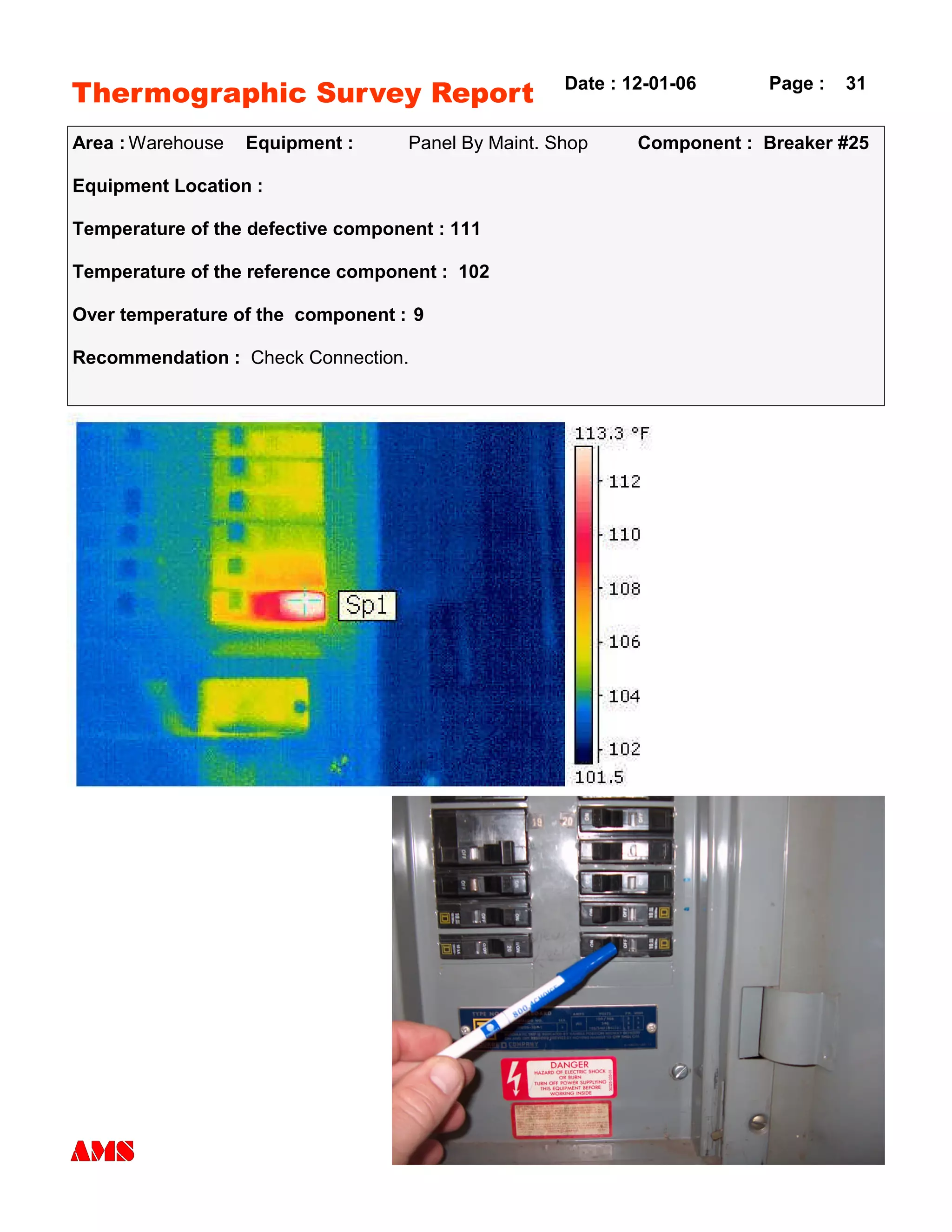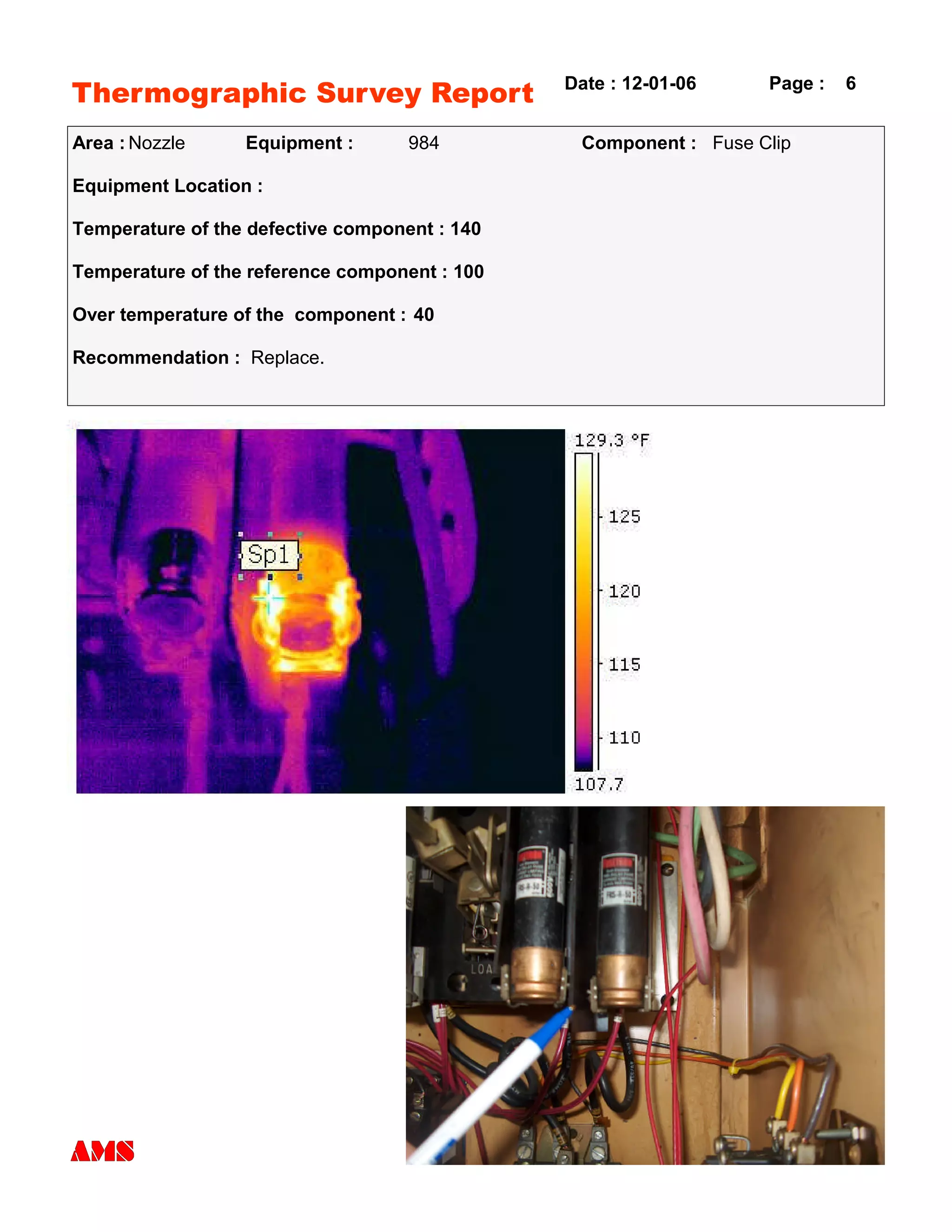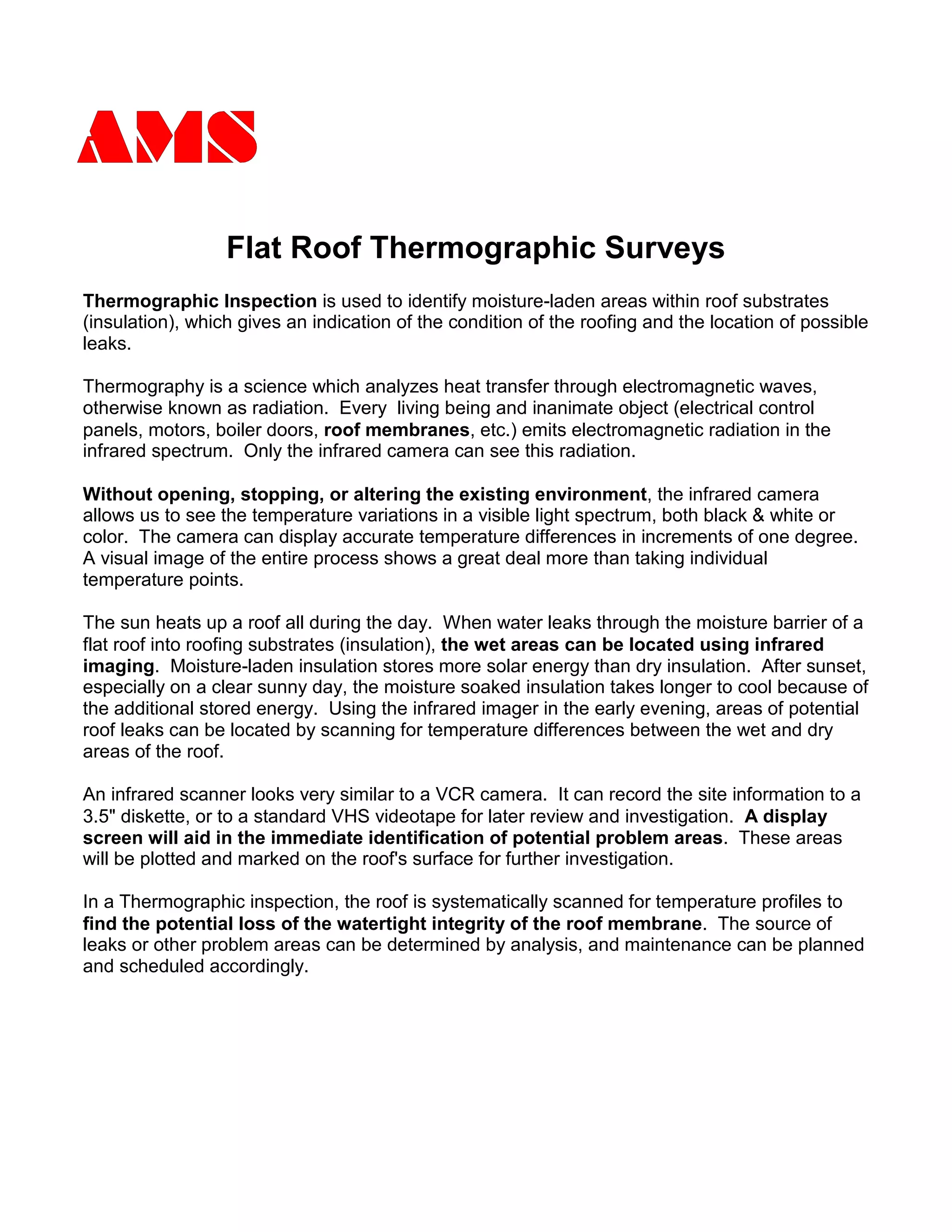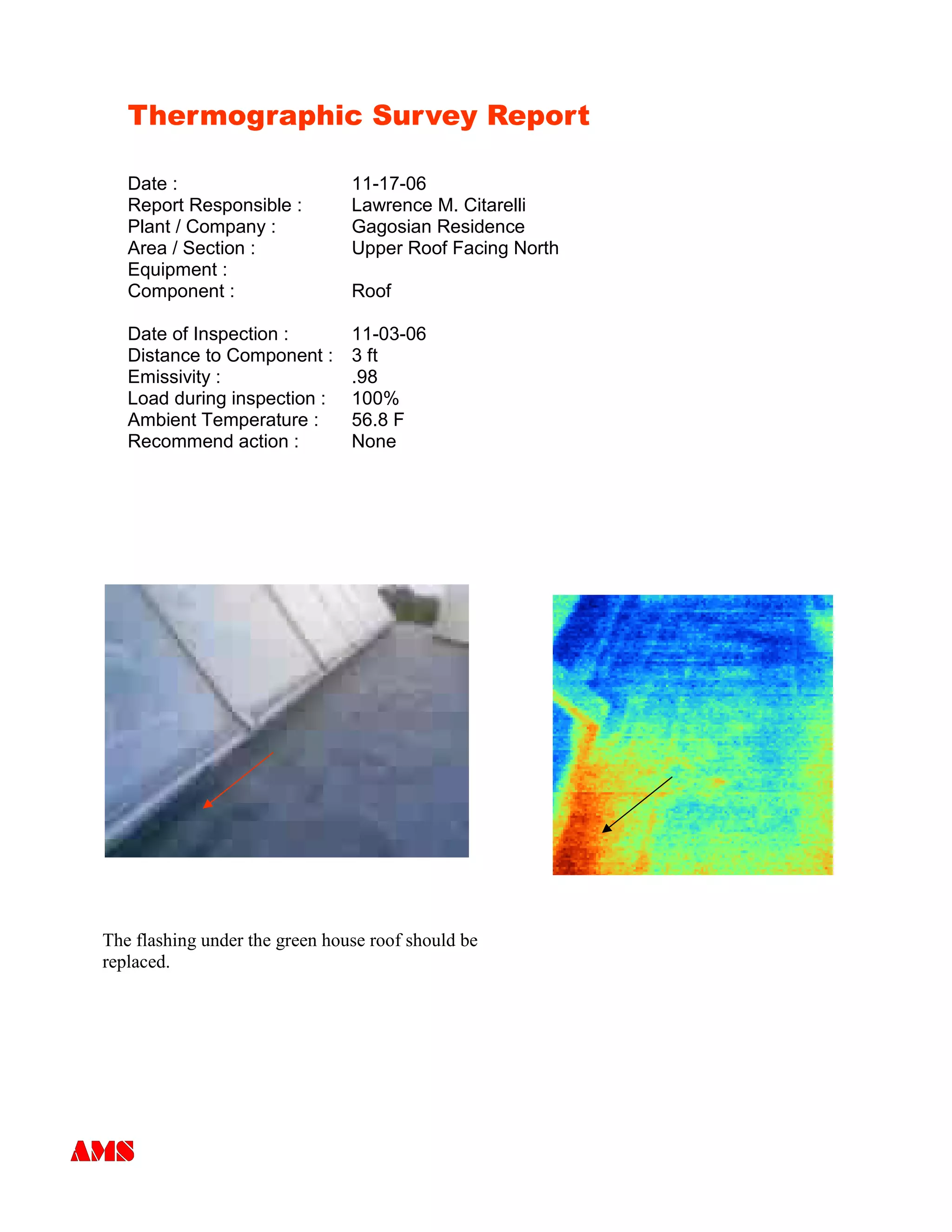The document is a predictive maintenance report from Advanced Monitoring Service for ABC dated June 24, 1996. It includes an infrared inspection report of Osram on June 21, 2006 that identifies temperature anomalies, recommended actions, and priority levels. It also provides information on infrared thermography inspections and what types of problems can be identified through this technique.

